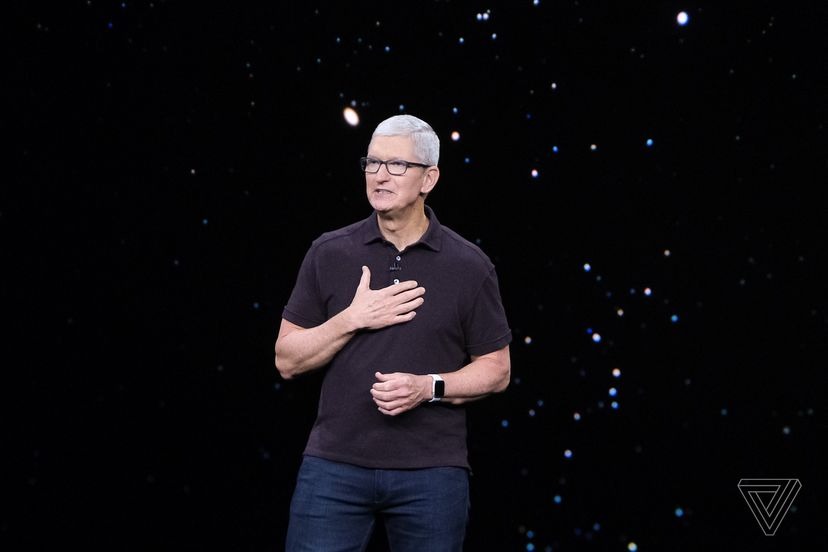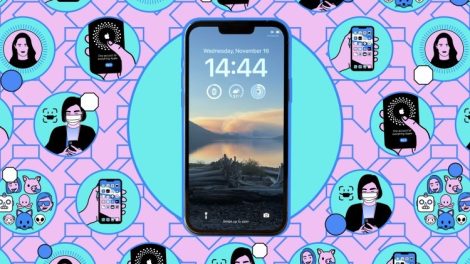During Apple’s latest earnings call, CEO Tim Cook teased some tantalizing new features coming to iPhones later this year – the integration of cutting-edge generative AI technology.
This hints at an exciting strategic shift for Apple as they push towards baking AI-powered capabilities right into their devices. While details remain scarce, the potential here is enormous.
So what exactly is generative AI, and why is Apple’s move such a big deal? Let’s dive deeper into this emerging technology and what it could mean for the future of the iPhone.
What is Generative AI?
Put simply, generative AI refers to smart algorithms that can create brand new, original content on their own. This includes everything from text, images, music, code, and more.
These systems are “trained” on vast datasets to understand human languages, artistic styles, audio patterns, and programming logic. They can then produce new outputs that are remarkably human-like – for example, generating a poem in the style of Shakespeare!
Some leading examples of generative AI today include:
- DALL-E 2 by OpenAI – Creates original digital art from a text description
- ChatGPT by Anthropic – Has natural conversations and answers questions
- Jasper by Anthropic – Writes code based on plain English instructions
The applications of this technology span far and wide, from content creation to personal recommendations to accessibility features. And now, it seems generative AI could soon land right in people’s pockets through iPhones.
Why Apple’s Move is Groundbreaking
While companies like Google, Microsoft, and Meta race to integrate AI, Apple has taken a characteristically measured approach. But now, Cook’s comments signal a major shift to tap into generative AI’s immense opportunities.
This stems from Apple’s recent acquisition spree of several promising startups in the space, including AI Music, Next Mind, and more. With some of the top minds in AI now on board, Apple is making big bets on the future.
By baking these models right into iOS, Apple is poised to enable intuitive new features for users while freeing developers to build creative applications. This also aligns with their focus on optimizing the iPhone experience rather than looking outward to the metaverse.
And with over 1 billion active iPhones already in use, Apple’s generative AI rollout will have an immediate, sizable impact.
The Possibilities – How You Might Use Generative AI on iPhones
While Cook did not reveal specifics, he did hint that the focus would be on “personalized experiences” and “creativity tools” for users.
What could this look like in reality? Here are some potential use cases analysts foresee:
Personalized Recommendations
Your iPhone may get to know your tastes and preferences – say, in music, books, recipes – and automatically suggest fresh personalized picks you’ll love.
Individualized Health Insights
Logging your fitness metrics over time could allow your iPhone to offer tailored health advice just for you.
Creative Writing Aid
Folks looking to write stories, poems, lyrics or social media posts could tap into AI assistance to turn basic ideas into fully fleshed out drafts.
Intuitive Smart Replies
Your iPhone might suggest thoughtful, nuanced responses in messaging apps based on context and your unique conversational patterns.
Vivid Image Generation
With progress in AI art, one could see tools that convert imaginative ideas into stunning digital paintings and pictures in seconds.
Bespoke Travel Itineraries
Planning a vacation? Describe your dream trip and let your iPhone whip up personalized recommendations and schedules.
Enhanced Accessibility
For those with disabilities, advanced AI could power features like automatic video captioning, image descriptions and enhanced dictation.
The possibilities are truly endless given the rapid pace of progress in generative AI. What seems like sci-fi today could soon be reality!
What Are Some Concerns Around Generative AI?
While generative AI’s potential is captivating, there are reasonable concerns to address as well around topics like:
- Data Privacy: Strict safeguards required to prevent misuse of user data
- Algorithmic Bias: AI models can perpetuate harmful stereotypes
- Misinformation: Fake generated text/images may spread lies if unchecked
- Automation Impact: Could AI accelerate job disruption across industries?
Thankfully, Apple has emphasized data minimization and on-device processing – meaning your personal information stays private. And unlike rivals, Apple avoids targeted ads, lessening incentive to collect excess user data.
But biases, misinformation, and job impacts remain open challenges. Collaboration between tech companies, lawmakers, experts in ethics/AI safety will be critical to maximize societal benefits of generative AI while minimizing downsides.
The Future is AI – Closing Thoughts on Apple’s Foray into Generative Models
The promise of generative AI injecting new creative possibilities right onto the iPhone is tremendously exciting. We are likely seeing just the tip of the iceberg in terms of use cases.
As Apple Chief AI Officer John Giannandrea said, “This generation of AI tech has the same game-changing potential as the advent of apps did.”
Indeed, 2023 and beyond may one day be remembered as the dawn of an AI revolution – with Apple poised to lead the vanguard through iPhones and beyond.
So get ready for more personalized, intuitive features than ever designed right into your iPhone. But discussion around responsible development of AI will remain crucial too.
What are your thoughts on Apple’s big generative AI push? Which use cases excite you the most? I’d love to hear predictions in the comments below!










Add Comment